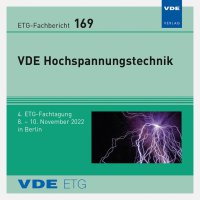Breakdown Strength of Insulating Materials in Tape Arrangements within Liquid Nitrogen
Conference: VDE Hochspannungstechnik - 4. ETG-Fachtagung
11/08/2022 - 11/10/2022 at Berlin, Germany
Proceedings: ETG-Fb. 169: VDE Hochspannungstechnik 2022
Pages: 7Language: englishTyp: PDF
Authors:
Humpert, Christof; Schmid, Andre; Schumacher, Ralph (Laboratory of High Voltage Engineering, Institute of Electrical Power Engineering, TH Köln (University of Applied-Sciences), Cologne, Germany)
Abstract:
In order to optimize high voltage superconducting devices based on high-temperature superconductors (HTS) and cooled with liquid nitrogen (LN2) with regard to its compactness and reliability, the properties of the electrical insulation systems must be investigated and improved in detail. An HTS tape conductor has a thickness of about 0.1 to 0.2 mm and a width in the range of about 3 to 12 mm. In HTS devices, the tape conductors are often wound into coils and insulated from each other by an insulating sheet or paper. To reproduce this arrangement in the laboratory two copper tape conductors with a thickness of 0.2 mm and a width of 6 mm were arranged exactly parallel. A specimen of insulating material was positioned symmetrically between the two copper tapes and tested for dielectric strength. Different conventional insulating papers, the mixed polymer PPLP (polypropylene laminated paper), PI (polyimide), PP and PET were part of the investigations. Besides the AC strength, the DC strength of the different materials was measured in dependence on the boiling state of the LN2. To achieve different boiling situations a simultaneous high-current injection to one of the copper tape electrodes were realized. At currents of 140 to 150 A nucleate boiling was investigated, while film boiling occurred at a current of 200 A, with a gas cushion around the heated copper tape conductor.


